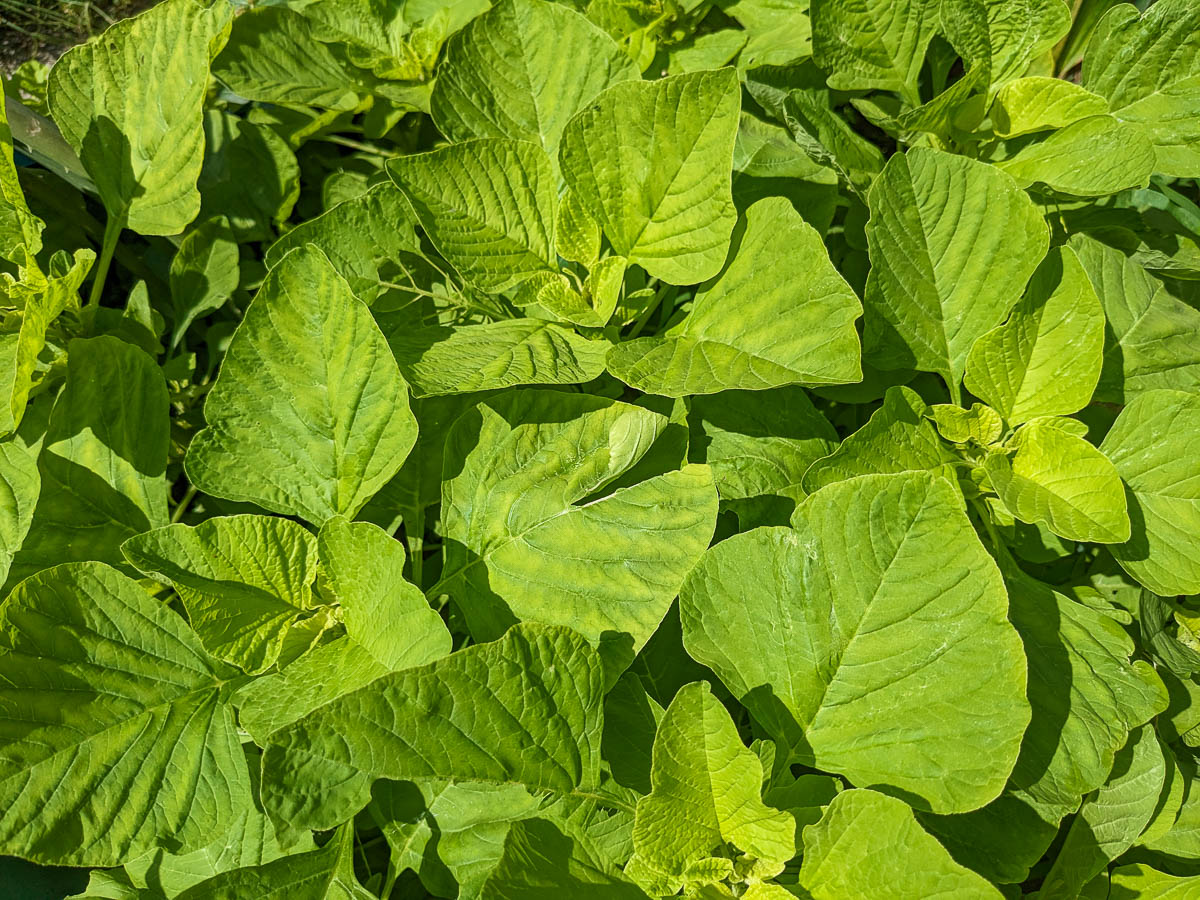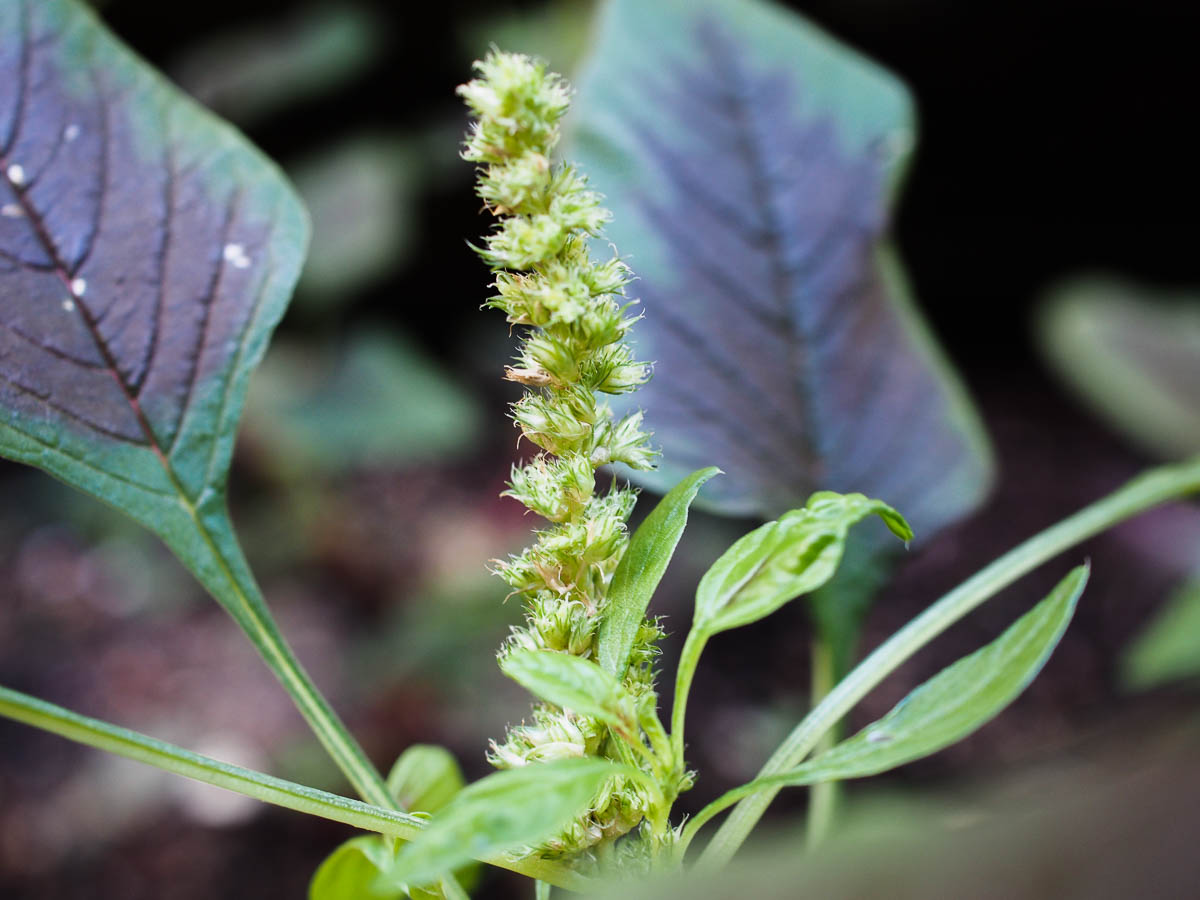Bayam
Bayam (Amaranthus tricolor)
Other common names: Green Amaranthus, Bayam Hijau, Chinese Spinach, Tampala, Joseph's coat, 苋菜, 汗菜
.jpg)
Bayam is a popular leafy vegetable in Malaysia and Indonesia. It can be grown in small, tight clusters of multiple plants around 10-20cm tall or as a large, erect plant up to 1.5m tall if given enough space. It has varieties that come in red, green or both, and is commonly eaten raw, steamed, or stir-fried. The sprouts can also be eaten as microgreens!
An annual crop, this plant is often grown and consumed under 4 months. Its rapid harvest cycle makes it useful for crop rotation.
Due to its shallow root system, these plants are a popular choice for container gardening.
Sun and soil needs:

This leafy vegetable thrives in 4-8 hours of direct sunlight, or more than 6 hours of indirect sunlight. Plants do best in pots with loamy soil at least 10cm deep, or in true ground. If planted in true ground and left with a lot of space, the plant can grow up to 1.5m high with a thick stem. These plants are vulnerable to root rot, so ensure that your pots drain well, and that your soil has plenty of organic matter to let the roots breathe. This plant is relatively drought tolerant and can withstand some neglect.
Sowing seeds:
Seeds can be directly sowed into a pot or into true ground, and then covered with a layer of soil or compost. Lightly water the soil until damp, once a day. Seeds should sprout within a week.
The seedlings may be eaten by snails or birds. Protect your young plants with a DIY cloche or netting.
Growing:
Bayam is a rapid grower and will produce more leaves if fed with high nitrogen fertilisers. Plants can be fertilised regularly once every two weeks after transplanting for a fuller crop.
This plant can be grown incredibly close together with many plants in a small space. If plants are thinned out and given enough ventilation, they will grow thicker stems and will grow taller and bushier.
Bayam plants will die after producing seeds. Prolong your harvest by pruning off flowers when they appear.
Harvesting:
Plants can be harvested for leaves at any time, with younger leaves being the most tender. However, the leaves will become tough as they get older. Most gardeners will harvest their crop around 3 weeks after sowing.
The whole plant can be harvested once by cutting the stalk at the base or multiple times by harvesting the young, tender stems from the top as per the cut-and-come-again method.

Bayam will start to flower after a few months or so. The flowers can be self-pollinated and will form brown seed capsules. Dry, brown seed pods are mature, and can be harvested for seeds to plant.
Harvest cycle:
| Growing period | Sowing to germination | Germination to transplanting | Transplanting to first harvest | Total sowing to first harvest |
|---|---|---|---|---|
| Approximate time | A week or less | About a week | 2 to 3 weeks | 3 weeks to a month |
Check out our sowing and harvest planner to schedule your growing!
Propagation:
Bayam is primarily grown from seeds.
Bayam seeds can be readily harvested from old plants that have flowered. Rub old and dry flower spikes between your fingers to collect the seeds for planting.
Common problems & solutions:
Young plants have soft stems and can be completely eaten by slugs and snails. Grow seedlings till they are at least 10cm tall before planting them in true ground, or use DIY cloches or netting to protect young plants.
Caterpillars, usually from the Diamondback moth and Tussock moth, can rapidly eat all the leaves of your plant. If your plant has lots of large holes and small brown or black poo pellets scattered around damaged leaves, you likely have a caterpillar infestation. Manually remove the caterpillars by hand and protect your plants with netting.
Leaf miners are fly larvae that eat the leaves from the inside, leaving white lines or patches in their wake. Manually remove damaged leaves and use fine mesh netting to stop the adult flies from laying eggs on the plant again.
Etiolation is characterised by plants growing long and skinny, with weak stems and small leaves. The plants may also sometimes look yellowish. Plants etiolate when they do not get enough sunlight, which results in slow growth and untidy forms. To prevent this, grow plants in environments with enough light for them and make sure that each plant has enough space to prevent overcrowding.

